One of the longest and most beautiful long weekends of the year is approaching. The long weekend of the Constitution, which this year lasts 4 days in most of the country. It will be a public holiday in Andalusia, Aragon, Asturias, Balearic Islands, Castile-La Mancha, Castile and Leon, Valencia, Extremadura, Murcia and La Rioja. From Vivanco, we propose a plan for tourism in La Rioja. What do you think if you book Friday and Tuesday afternoon for transport and enjoy this beautiful community on Saturday, Sunday, Monday and Tuesday morning? If you are interested in this plan, here we tell you what are the best autumn plans to enjoy sightseeing and get to know La Rioja in depth.
We propose a route from north to south, from Rioja Alta to Rioja Baja. If you are coming from the south of Spain, you only have to change the order of the route.
Day 1 - Saturday: visit to Vivanco
This is an essential stop for wine lovers, as well as for art, nature and food lovers.
The wineries and wine museum Vivanco are located in Briones, in the district of Haro, in the Rioja Alta. You can arrange a visit to see the wineries and the museum and enjoy Rioja gastronomy in its restaurant, all in one day.
In the cellars you can visit the different rooms such as the octagonal barrel room, the vat room or the malolactic fermentation room.
You will also be able to enjoy unique experiences with professional oenologists who will teach you everything you need to know about the world of wine in specialised tastings. As part of the visit to the winery you will see the vineyards, landscapes of such breathtaking beauty that cannot be described in a post.
In the museum you will learn all about the culture surrounding the world of wine. Divided into 6 rooms, you will learn about the origin of wine and its evolution, how barrels and corks are made and how the glass is blown out of the bottles, you will find out about the winery's own work and you will enjoy art in its purest form, through a large collection of art and archaeology with works that have wine as their common denominator. And, of course, you have to go out into the natural environment and end up in the Garden of Bacchus, a collection of more than 200 varieties of grapes, both national and international.
In the restaurant at Vivanco, as well as discovering the best of Riojan gastronomy, you will be able to discover interesting and innovative proposals such as Winecooking, a cuisine where wine becomes more than just an accompaniment, it becomes a fundamental ingredient in the preparation of the dishes.
Day 2 - Sunday visit to La Rioja Alta
Continuing in the north of La Rioja, we now propose some of the tourist attractions in this area.
First of all, if you were visiting Vivanco yesterday, why don't you take the opportunity to visit Briones? At Briones you can see beautiful monuments such as the palace of the Marquis of San Nicolás built in the 18th century, the church of Nuestra Señora de Asunción in Elizabethan Gothic style from the 16th century or the fortress of Briones dating from the 13th century, among other things.
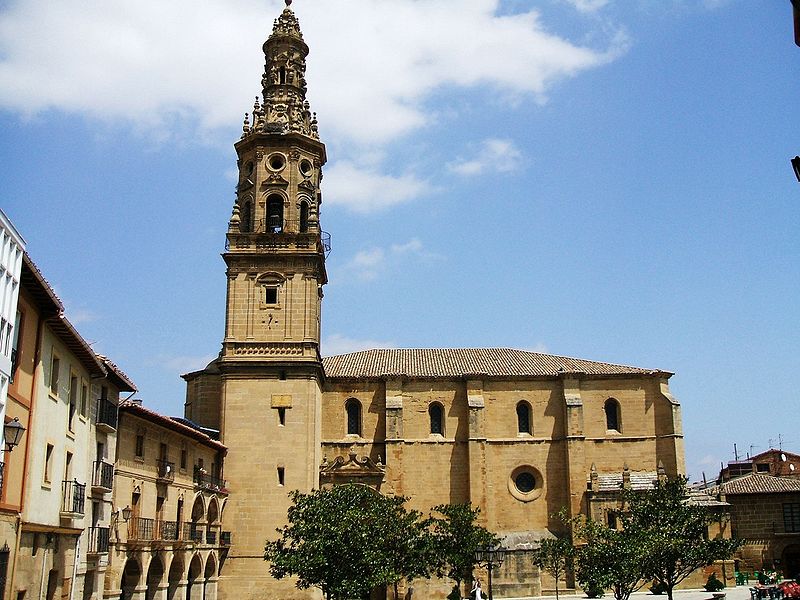 Church of Our Lady of Asunción, in Briones. Author: Zarateman
Church of Our Lady of Asunción, in Briones. Author: Zarateman
Following the route through the Rioja Alta region, we recommend that you visit the beautiful town of Haro , 47 km from Logroño. Haro is famous for its historical and architectural heritage, with numerous palaces such as the Plateresque palace of Bendaña, the Baroque palace of Bezaras and the Palace of the Counts of Haro, which blends two architectural styles, Renaissance and Baroque. Nor should you miss the chapel of San Felices, the scene of the famous wine battle; the basilica of Nuestra Señora de la Vega, built in 1703 in honour of the patron saint of Haro; the contemporary art museum "El Torreón" or the neoclassical Town Hall dating from the 18th century.
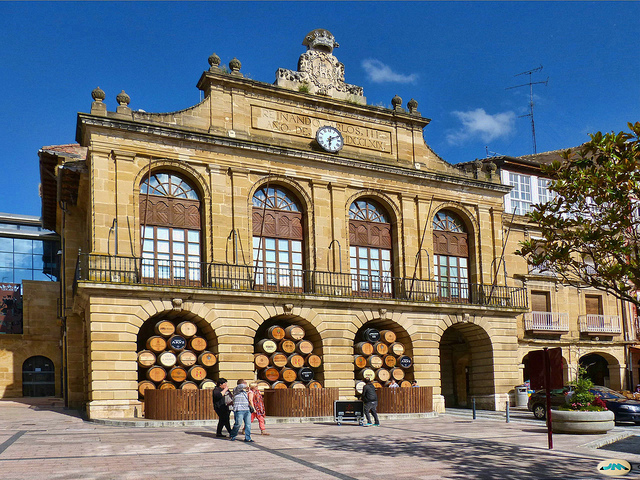 Haro Town Hall. Author: juantiaques
Haro Town Hall. Author: juantiaques
Another beautiful town in the Rioja Alta region that is a must-see is Nájera, 27 km from Logroño. Highlights include the Convent of Santa Elena, built in the mid-16th century; the Monastery of Santa María la Real and its cloister, known as the "cloister of the knights", dating from the 11th century and declared a national monument in 1089; and the Mota Castle, of Muslim origin, of which only the moat and its wall remain.
In San Millán de la Cogolla, located in the district of Nájera, you can visit the monasteries of Suso and Yuso, both declared World Heritage Sites by UNESCO for their architectural, historical, artistic, literary and linguistic value. San Millán is considered to be the "Cradle of Castilian Spanish" and the Yuso Monastery houses the "Salón de la lengua" (Language Room), an archive and a Venetian-style library containing codices and chant books. It is also the headquarters of the International Centre for Research into the Castilian Language.
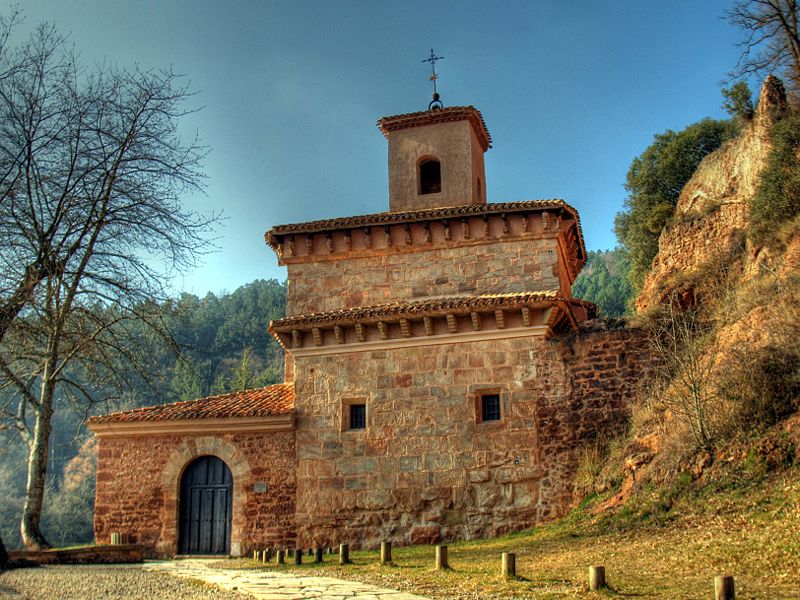 San Millán de Suso Monastery. Author: aherrero
San Millán de Suso Monastery. Author: aherrero
If you like monasteries, in La Rioja Alta you can also visit the Monastery of Nuestra Señora de la Asunción in Santo Domingo de la Calzada or the Monastery of Nuestra Señora de la Piedad in Casalarreina. Although if you are a fan of this type of religious tourism, you can also follow the route of the monasteries that we talked about here.
Day 3 - Monday: Visit to Logroño
For Monday, we suggest you visit Logroño. You should visit the Co-cathedral of Santa María la Redonda, which although it is not round, its presence is worthy of admiration. Other outstanding churches are the imperial church of Santa María de Palacio, built between the 12th and 13th centuries; the church of Santiago, an obligatory stop for pilgrims, and the church of San Bartolomé, the oldest in the city, built in the 12th century.
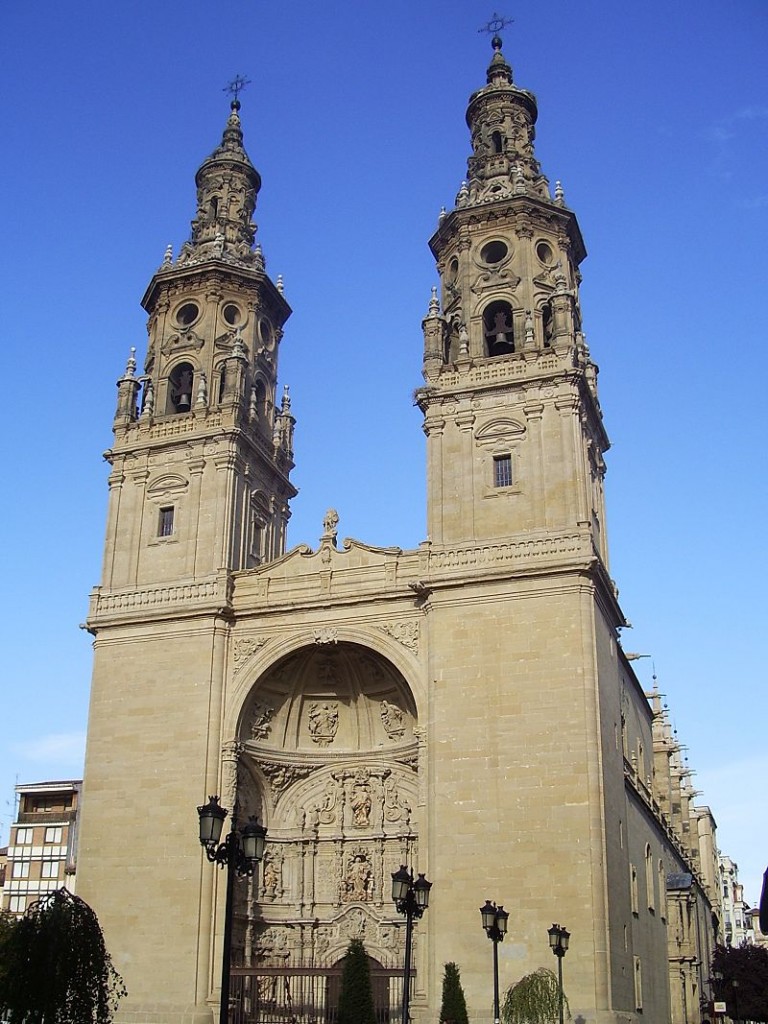 Façade of the Co-cathedral of Santa María de la Redonda, in Logroño. Author: iynus
Façade of the Co-cathedral of Santa María de la Redonda, in Logroño. Author: iynus
In the old part of the city you should visit the underground cellars called calados or the Parliament of La Rioja with its Baroque façade. And at night, if you want to enjoy the best Rioja gastronomy or go out for a drink, you should go to the famous Calle Laurel.
If you prefer a plan to be in contact with nature, about 50 km from Logroño you will find the Sierra Cebollera Nature Reserve. This place is ideal for those who enjoy hiking routes even in winter.
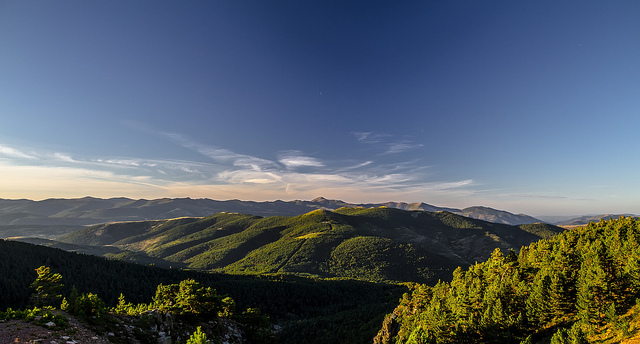 Sierra de Cebollera Natural Park. Author: Shemsu Hor
Sierra de Cebollera Natural Park. Author: Shemsu Hor
And if you want to dedicate the whole long weekend to plans more related to natural environments, here is a list with some ideas:
- The Sotos de Alfaro Nature Reserve
- Lagunas de Urbión
- Hervías Lagoon
- Sierra de Alcarama and Río Alhama.
- Peñas de Arnedillo, Peñalmonte and Peña Isasa
- Obarenes Mountains and Cantabria Mountains
- Sierra de la Demanda
- Peñas de Iregua, Leza y Jubera
Day 4 - Tuesday: Rioja Baja
You can spend the last day exploring the villages of the Rioja Baja. We suggest you visit, for example, Calahorra, Arnedo or Enciso.
In Calahorra, 49 km from Logroño, you cannot miss the 17th century Gothic style Cathedral of Santa María; the 17th century Baroque Sanctuary of El Carmen; the Church of Santiago Apóstol, in neoclassical style built between the 16th and 17th centuries; the Monastery of San José from the late 16th century; the remains of the Roman wall or the Roman circus of Paseo del Mercal, among many other tourist attractions.
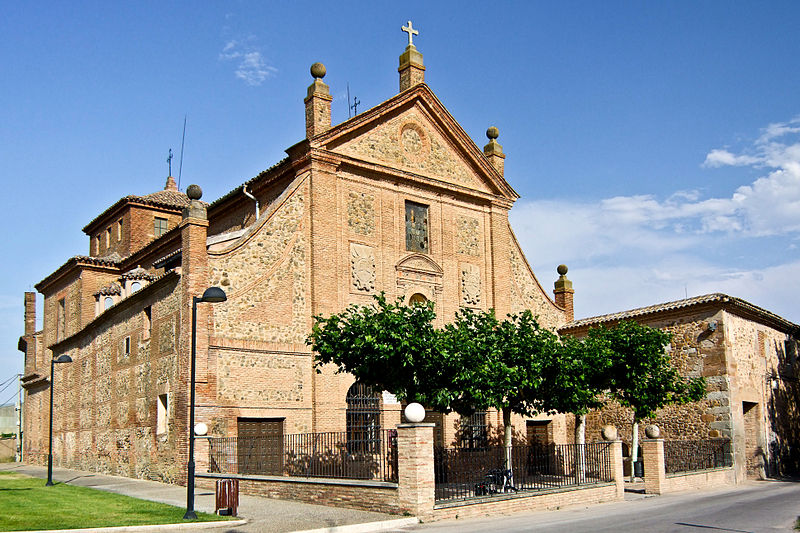 Sanctuary of El Carmen, in Calahorra. Author: Juanma232
Sanctuary of El Carmen, in Calahorra. Author: Juanma232
Another town worth mentioning is Arnedo, 48 km from Logroño. Here you can visit, among many other places of interest, the late Gothic churches of Santo Tomás, Santa Eulalia, the Monastery of Vivo, the Palace House of Archbishop Argaiz and the Castle of Arnedo, of which only the ruins remain, as this Arab fortification dates back to the 9th century.
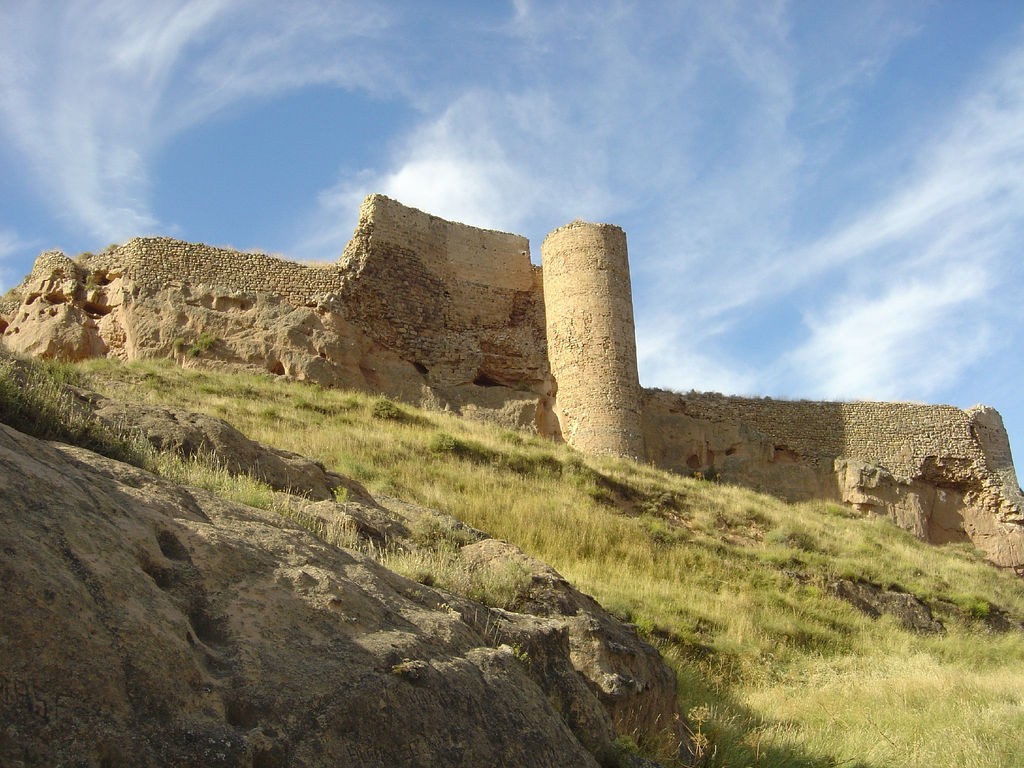 Arnedo Castle. Author: Exequias
Arnedo Castle. Author: Exequias
Near Arnedo, in the small municipality of Arnedillo, there is another castle-tower dating from the 13th century. In the same region there are also the remains of the medieval castle of Autol.
As you can see, there are numerous castles in this area of La Rioja and if you are interested in these buildings and their history, you can also dedicate the long weekend to a route exclusively of castles. We tell you about this route here.
The next village we want to tell you about is Enciso, 71 km from Logroño and famous for its fossilised dinosaur ichnites. There are around 3,000 dinosaur footprints and there is even a specific route, "the path of the dinosaurs of Enciso", on which for approximately six kilometres you will discover three of the most important sites in La Rioja, the Virgen del Campo site, the La Senoba site and the Valdecillo site.
 Ichnites in Enciso. Author: Txo
Ichnites in Enciso. Author: Txo
With so many options, La Rioja is a must-visit destination to enjoy a long long weekend.
What do you think of this itinerary, and if you're up for it, let us know about your experience!







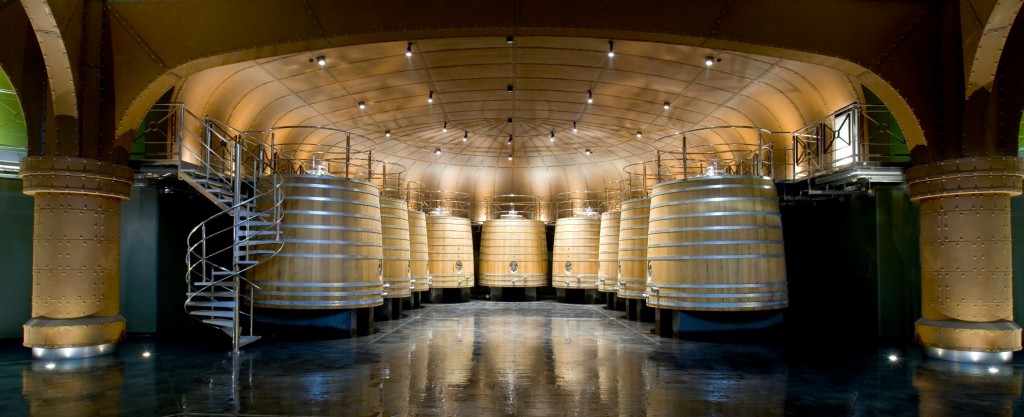
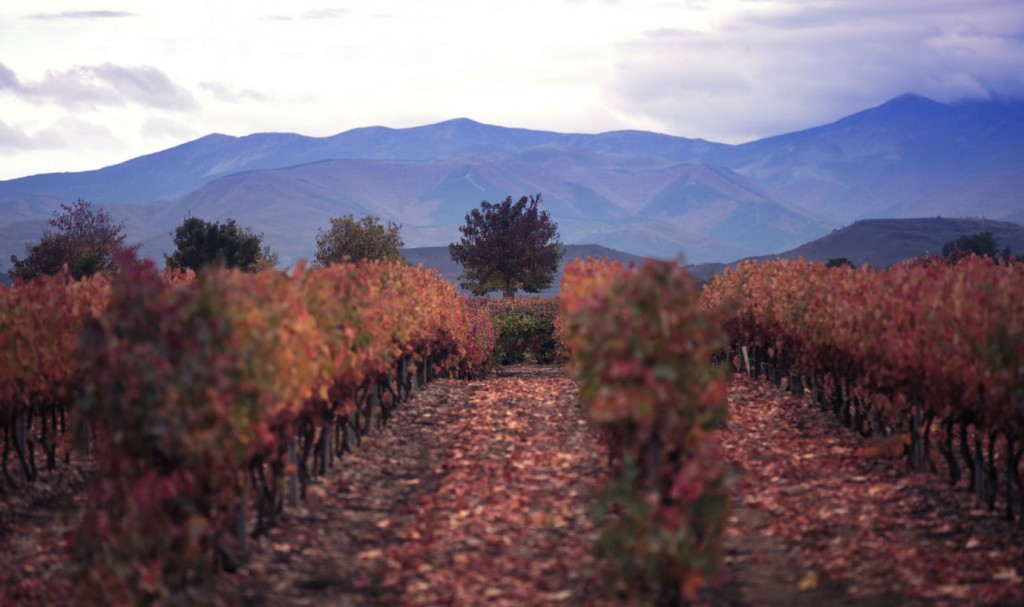
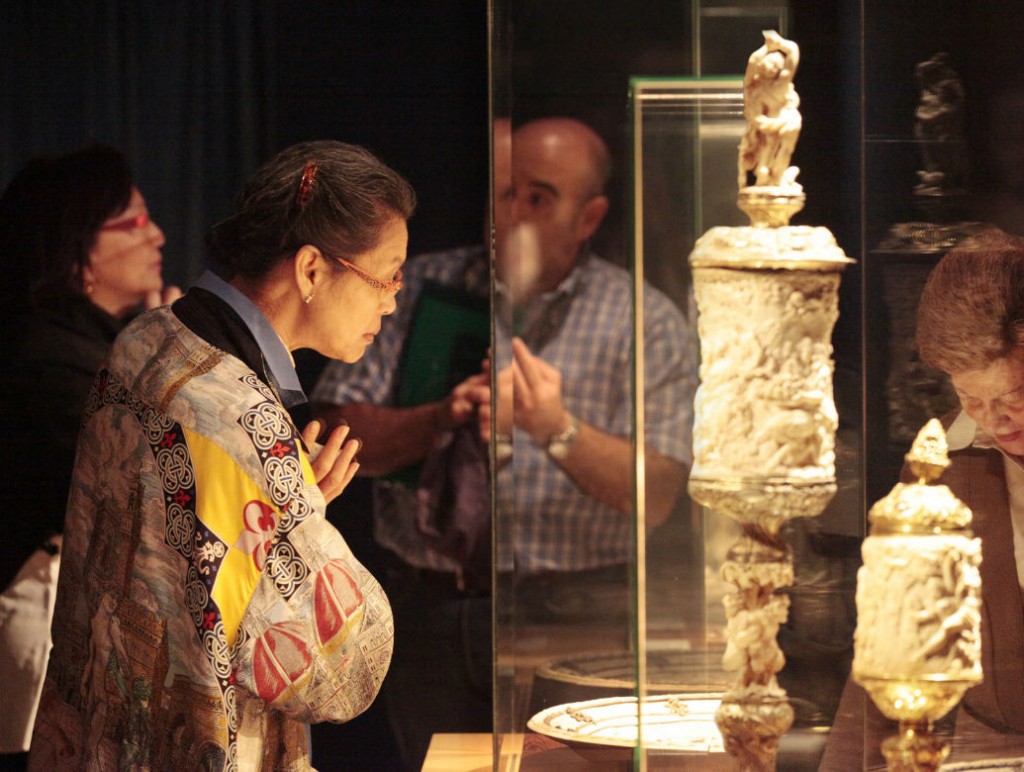

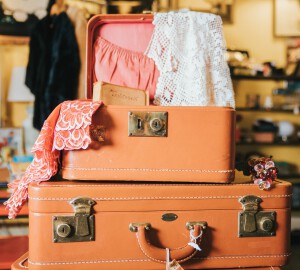
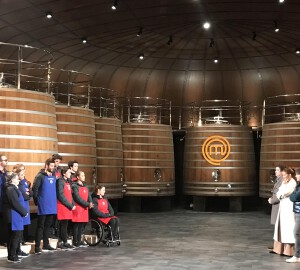
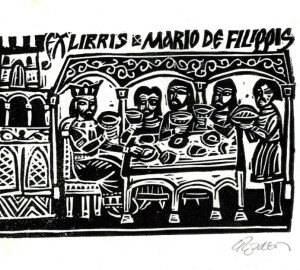







I think it is impressive, beautiful...with a variety of activities.
Price of this getaway?
Hello Luisa!
La Rioja is an impressive area for a getaway and, moreover, affordable for all budgets. The price of a visit to Vivanco of the Museum of Wine Culture + winery + tasting of two wines Vivanco is 20 euros.
Greetings and thanks for visiting our blog!